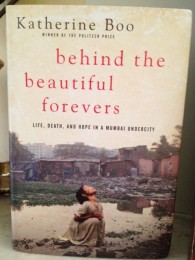The other day as I was stopped at a traffic light, a tiny woman with long white hair wearing an old suede fringed jacket inched across the street in front of my car. It was so incongruous to see someone of her age wearing such an iconic '60s artifact. I found myself remembering the fall of '68 when I was turning 13 and had gotten my very own groovy, fringed jacket. Which I made sure to wear to the couple of anti-Vietnam War rallies I attended.
My fringed jacket practically vibrated with symbolic importance- I thought it showed my parents that I was liberated from their middle-class suburban mores and that it identified me with a group of people who I thought were going to make the world a better place.
As I daydreamed at the stoplight, I realized that I almost never had the feelings of hopefulness that I felt whenever I wore that fringe jacket 35 and almost 40 years ago. It got me thinking that it was worth revisiting the '60s (by which, of course, I mean the late '60s and early '70s) ethos. Here are a few thoughts:
Intoxicate Yourself And I don't mean take LSD. But I do think I could use some of the kind of joy that I used to feel wandering in my tie-dyed T-shirt through Volker Park in Kansas City - just hanging out and listening to music with nothing else to do but be there now.
All of us might feel more optimistic about the world if we grooved a bit more to life's sensual pleasures. Try this. Do nothing for the afternoon except rock in the hammock and listen to Bob Dylan. Walk barefoot through the grass. Don't wash your hair or make your bed. Seriously. Hang loose.
Let Your Hair Down Find more comfort in being yourself. It's OK to have wrinkles and bags under your eyes. God knows we had a lot of bags under our eyes in 1971. View all the signs of having lived a full life as markers to be worn proudly.
It used to be we changed our clothes and let our bodies be natural testaments to our values; now we radically alter our bodies and keep our clothes the same. Does anyone else see a problem with this approach?
Dream Bigger Dreams In the '60s we imagined a better future; now we tend to cling to a haloed past and our youths. What's up with that? We never wanted to represent the status quo and now, even though we are, perhaps we should occasionally surprise the world and ourselves.
Try to embrace the transformative spirit of the '60s - the meditation, the individual expression, the exuberance. Maybe it's time to turn on and tune in.




